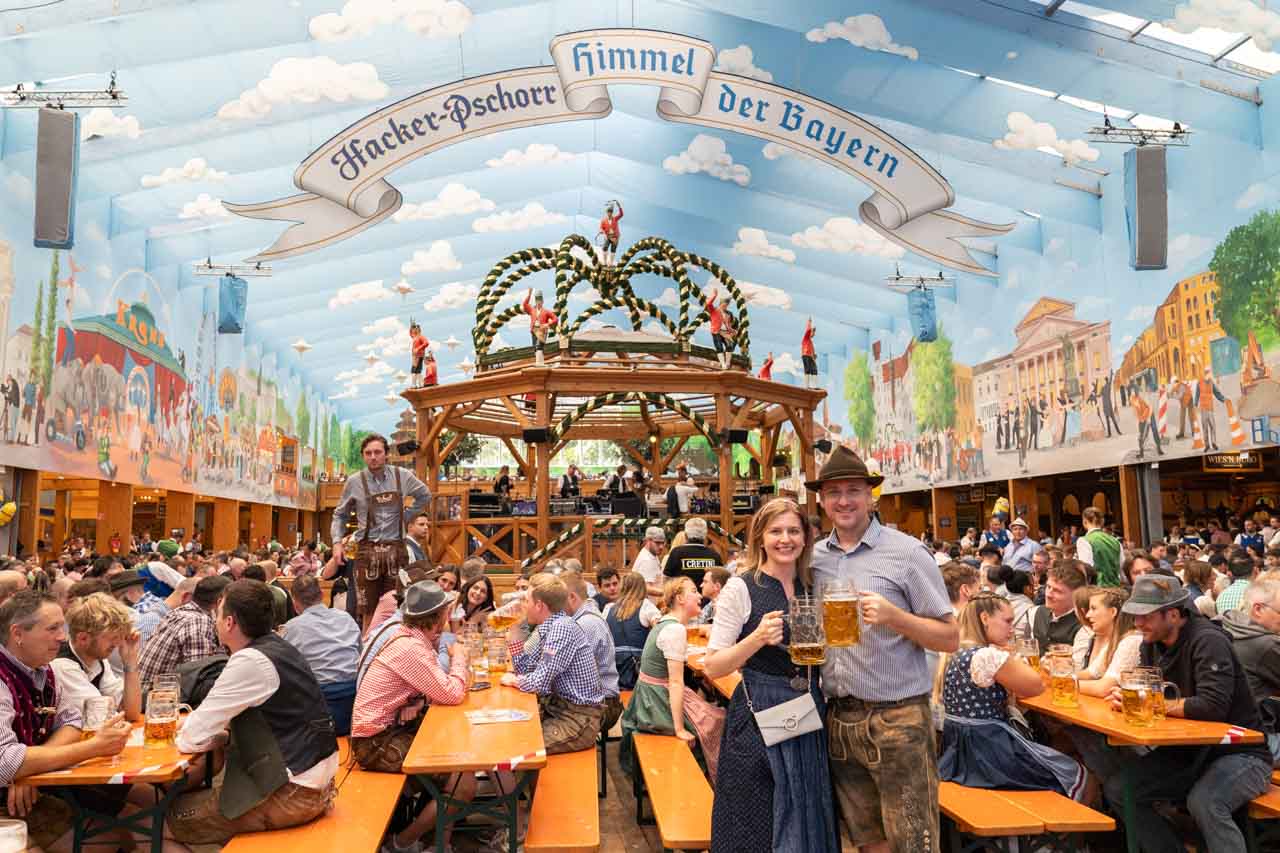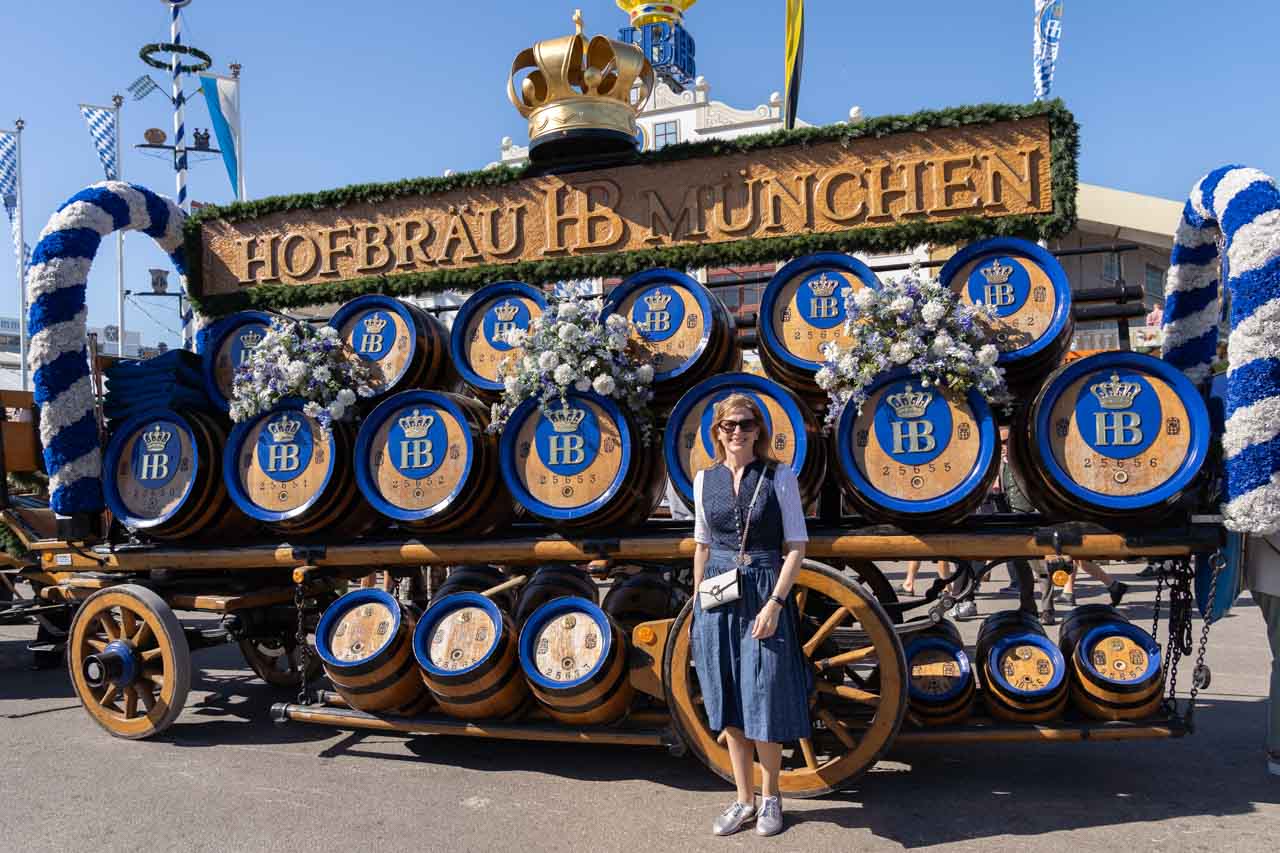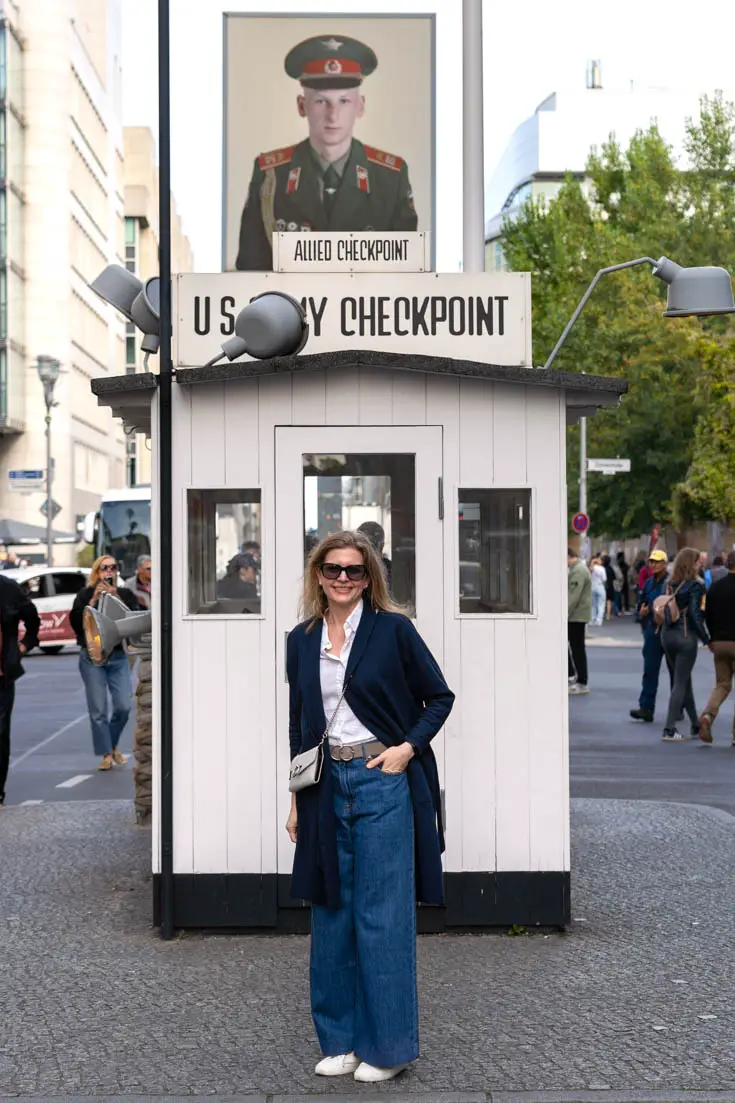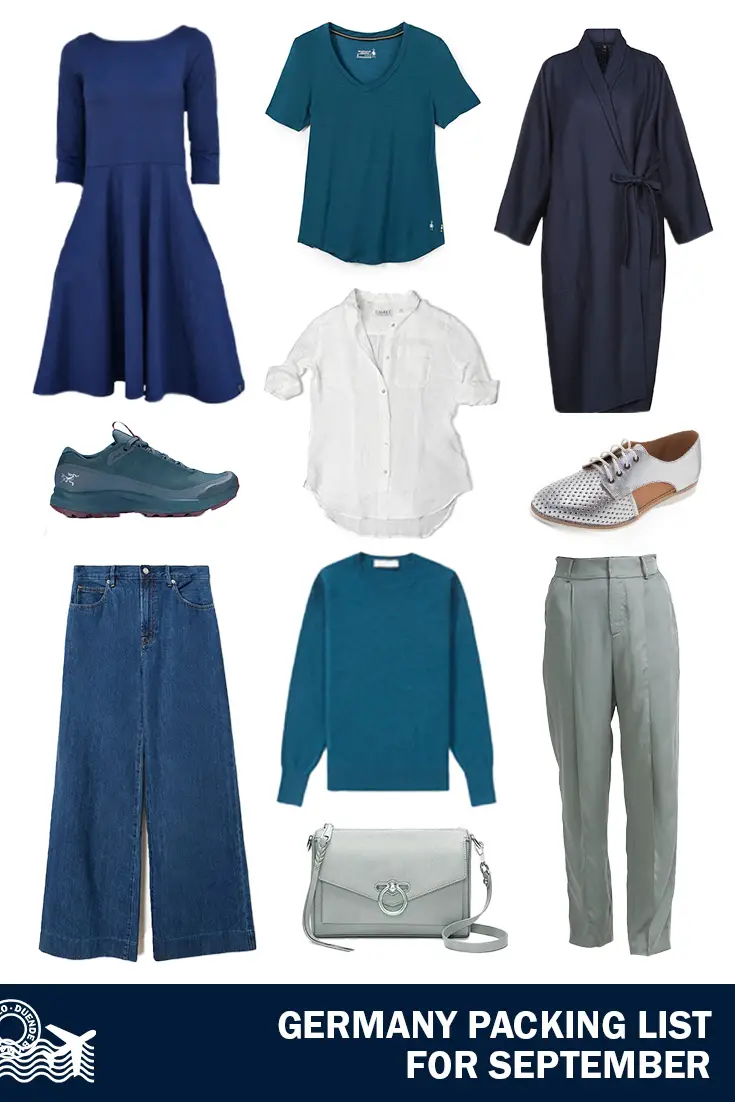Choosing to visit Germany in September is a no-brainer! Through September and early October— Oktoberfest is in full swing; the weather is comfortable; and summer crowds are passed their peak. So now that you’ve bought your ticket, it’s time to pack your suitcase. Learn what to wear in Germany in September with the following guide. There’s a printable checklist, available at the end of the post.
Disclosure: I may earn compensation from the purchase of any product or service linked on this website, at no extra cost to you. I only link to products I use and love, therefore feel comfortable recommending.
Table of contents
General packing tips for Germany
Climate
Broadly speaking, Germany has a fairly uniform, temperate, rainy climate. Of course, there are some geographical variations especially if you are travelling to places of higher altitude. Therefore, you’ll need to look at the specifics of each region on your itinerary. I’ll take you through them:
Southeast
The southeast encompasses the state of Bavaria including the state capital, Munich—I’m sure you’re familiar. Those visiting Munich, the Alps, Neuschwanstein Castle or driving the Romantic Road, will be spending time here.
The southeast is relatively sunny compared to north Germany. Temperatures are moderate but will drop as you gain elevation in the German Alps. Munich’s September average temperatures range from 8-19°C (47-66°F) and there’s an average of 11 rainy days. The alpine town of Füssen, not far from the aforementioned castle, experiences September temperatures ranging from 7-16°C (45-61°F).
Southwest
This region incorporates the states of Baden-Württemberg, Hesse, Rheinland-Palatinate, and Saarland. If the Black Forest, German Wine Route or cities such as Frankfurt, Stuttgart, Mainz or Freiburg are on your itinerary, then you will need to take note.
This is the warmest part of Germany and in some areas, it is also the sunniest. Frankfurt averages between 9-21°C (48-70°F) in September with around 8 rainy days. Whereas Freiburg and the Black Forest experiences temperatures of 9-23°C (53-72°F) with closer to 13 rainy days.
Northwest
The northwest of Germany includes the states of North Rhine Westphalia, Lower Saxony, Bremen, Hamburg and Schleswig Holstein. The cities of Cologne, Düsseldorf, Bonn, Hanover and Lübeck are located within this area. If you’re cruising the Rhine, you will pass through the northwest region.
The northwest has two sub-regions: the furthest north will be influenced by the Atlantic Ocean and therefore is more of a maritime climate. This means fewer temperature fluctuations, with more wind and rain. The second sub-region further south is land-locked, producing a more continental climate with greater temperature variations.
Hamburg temperatures range from 8-19°C (47-63°F) in September. Skies will be overcast around 50% of the time. It will experience about 10 rainy days over the course of the month. Düsseldorf temperatures vary from 10-20°C (50-68°F) and the number of rainy days are about the same as Hamburg.
Northeast
The states of Mecklenburg-West Pomerania, Brandenburg, Berlin, Saxony-Anhalt, Saxony, and Thüringia all fall within the northeast climate zone. If Dresden, Berlin, Potsdam, Leipzig, Weimar or Rostock are on your itinerary this is for you!
Overall, the Northeast is colder than other parts of Germany. The Baltic Coast is slightly more moderate due to its maritime position. The rest is subjected to long, cold, overcast winters with frosty fronts coming across from Siberia.
During September, expect temperatures in Berlin to range from 9-20°C (48-68°F) and 8 days of precipitation. If you’re travelling near Dresden, or heading out to Saxon Switzerland National Park, you’ll find maximum temperatures are lower and rainy days even fewer. The area’s average temperatures range 10-17°C (50-63°F), with about 4 rainy days.



Clothing and Comfort
Germany is a very walkable destination, so expect to work up a sweat at times, even on a cooler day. Pack lightweight, layerable pieces that will allow you to adjust to changing temperatures.
One water resistant outwear piece is good for rainy days, and make sure it is long (at least to your knees) with a hood or pack a separate rain hat. I’m not a fan of umbrellas for travel, they take away the use of one hand and easily blow inside out in windy conditions.
Down filled garments are a poor choice for rainy environments unless it’s encased in a completely waterproof outer layer. Once down has been wet, it clumps together and doesn’t perform as well thermally. Cotton is also not ideal, especially for garments like socks that might get wet. Wool is a great option as water tends to bead on its surface.
Currency and payment methods
The Euro (EUR or €) is the official currency of Germany. Note that prices are written a little differently in Europe. A comma or the Euro symbol are used to separate Euros and cents, where in English we would use a decimal point. For instance, $9.99 in English is €9,99 or 9€99 in Germany.
Germany is still largely a cash economy, especially if you frequent small businesses such as B&Bs and family-run restaurants, giftshops etc. Credit card companies charge businesses commission on card payments, therefore smaller businesses prefer to operate nur bar or nur geld, meaning cash only in German.
In large cities, you will probably have access to card payment facilities in most circumstances. However, you will still need to have cash on you. Also, make sure you budget for tipping when you decide how much cash to carry in Germany – more on tipping customs in a minute.
You don’t need to exchange cash before you leave home and there is little benefit in getting local currency from a money exchange booth. Withdrawing Euros from an ATM on the ground in Germany is usually the best option for a favourable currency conversion rate.
Note, that if you’re using a credit card in automated ticketing machines etc, it will require a chip. If your credit card does not have a chip, then you will need to carry use cash for these circumstances.
Etiquette
Take care to dress more conservatively when visiting religious sites in Germany. This generally means covering shoulders, knees, midriff and chest for all genders.



Electronics
Electricity in Germany is delivered at 230-volts and 50-hertz. Generally, modern phones, tablets and laptops are made for both 110-127V and 220-240V, but it is best to check the label or you will ruin your appliance or device. If your device isn’t set up to accept 230V, 50Hz, then you need a voltage convertor.
With regards to plugs and sockets, Germany uses type C and F plugs (with two round pins). You will certainly need an international adaptor if you are coming from Australia, North America, UK, Singapore and various other countries outside Europe.
Environment
Minimise single-use plastics and use of disposable products when you travel, as much as possible – these guides have some practical suggestions: 8 Essential Eco-Friendly Travel Products and 5 Steps to More Sustainable Travel.
Depending where you live or travel regularly, some of the things I recommend you pack for Germany may not be part of your existing wardrobe. Consider borrowing and/or thrifting items to fill the gaps, if there is something you need. I share my sustainable sources for travel clothing here.
Health
Tap water is safe to drink in Germany, although depending on where you are it doesn’t always look or taste the best. In our experience, Munich has the worst tap water by far!
Tap water is not provided free of charge at restaurants and can be very expensive. Locals will often drink bottled water and are also very conscientious about recycling the bottles (which you can return for money in Germany). I suggest starting with tap water and if you don’t like the taste, then decide whether you want to pay for bottled water. Often, boiling tap water is a good way to improve the taste. German hotel rooms generally have an electric kettle which makes this easy to boil tap water and refill your water bottle, just make sure you let it cool first.
Passport, visas and insurance
Ensure your passport has at least 6 months validity and plenty of pages for your new passport stamps. Check here whether you require a visa for entry into Germany – it will depend on the country of your passport.
I highly recommend taking out travel insurance. Here are a few recent examples of circumstances where we made travel insurance claims. Without insurance we would have lost thousands of dollars.


Security
Pickpocketing and petty theft are common throughout Europe on trains/buses and frequently touristed areas. Pickpockets often work in gangs, where one will distract you while the other swipes you wallet, so be vigilant.
Keep your valuables to a minimum, secure those you must take and don’t flash them around. Ensure your bag is zipped up and within reach at all times. Crossbody style bags are preferable, as they can’t be easily pulled off your shoulder. Thieves have been known to slash bags to get at their contents or cut the strap to remove them entirely.
Don’t leave your phone or wallet sitting visible on a tabletop, even if they are right in front of you – they are easily snatched by a passerby. Also, don’t stand close to the roadside using your phone, step back from the curb, out of reach of passing snatchers on bicycles. See this post for general travel security tips.
Tipping
The question of tipping usually comes up when I’m packing, because I’m also thinking about what payment methods I’m taking and using while on the road. Germans tip, just not to the extent of North Americans. German staff make a living wage and tips are referred to as “Trinkengeld” i.e. drinking money.
Rounding up to the nearest couple of Euro is perfectly acceptable in a lot of circumstances including taxis. Anything more than 10% in restaurants would be extraordinary. If there is a “Bedienung,” service charge on the bill, a couple of Euros will do. Round up to the nearest Euro in a bar.
For hotel bellhops or a helpful concierge, tip €1-4 and €2-4 per night for housekeeping. Gratuities for tour guides are typically in the realm of 5-10% per day and tip half that for the tour driver, if there is one.
One gratuity that is considered obligatory, is public bathrooms. Usually there will be someone attending the bathrooms to ensure they remain well stocked and clean. A basket out front will usually indicate a fair price, otherwise €0,50 is acceptable. Cloakroom attendants would also expect €0,50-2,00 (notice I wrote these the German way with the comma!).
What to wear in Germany
Like many of their European neighbours, Germans are generally well dressed and tend to err on the side of smart casual, classic and practical. Here’s a few things to avoid if you don’t want to appear like an obvious tourist:
- Dress nicely for restaurants, attending the theatre and other special events (no jeans or sneakers). If you’re going somewhere specific, check the dress code in advance.
- Leave your baseball caps along with clothing bearing college and sports team logos at home.
- Wear activewear only when actually doing something active.
- European men generally don’t generally wear shorts. Instead, op for a clean pair of jeans (not distressed) or chinos.
- Germans prefer muted colours and neutrals rather than neons or overly vibrant hues.
- Pack clean, smart but practical shoes. Cobblestone streets in cute, medieval towns are a hazard in heels.
What to wear at Oktoberfest
If you’re visiting Germany in September it is most likely you are spending at least one day at Oktoberfest. You can absolutely wear regular clothing. However, you will be in good company if you choose to wear Trachten (traditional Bavarian clothing), meaning Lederhosen for men and a Dirndl for the ladies. You can pre-purchase Trachten online in advance, or buy something from one of the many first and second-hand retailers when you arrive in Munich.
Bavarian’s are happy for you to wear Trachten, as long as you do it properly. Remember these traditional dress pieces are part of their culture. Cheap Halloween-type costumes and t-shirts with lederhosen printed can be considered offensive.
Make sure you pack nice, flat walking shoes such as ankle boots or brogues for women and leather dress shoes for men. Consider packing an underlayer in case it’s a cool day at the festival. I’m a cold body so I wore a pair of flesh-coloured pantyhose, and a merino wool tank under my dirndl. I also had a lightweight, neutral coloured coat to put on over the top.
There are bag size restrictions, so you need to consider this in advance and plan what you are taking. A small, neutral-coloured cross-body bag is ideal. Something just big enough for the absolute essentials.



Germany packing list
Travel documents
- Passport
- Visa, if required
- Covid-19 vaccination card – we haven’t been asked for this recently, but for now I’m carrying an up-to-date copy just in case.
- Itinerary, reservations and tickets
- Travel insurance information
Clothing and accessories
- Underwear, bras and socks – pack just a week’s worth and wash in the shower or bathroom sink. Remember to choose warm, water-resistant socks and bring plenty.
- Sleepwear – including sleep mask and earplugs if you’re a sensitive sleeper.
- Base layer – A base layer for cooler and windier days is a really good idea. I like a merino wool tank and leggings that I can layer under anything for a bit of extra insulation. You can get good autumn-weight base layers in silk and cotton also.
- Shirts – pack a shirt for every 2-3 days of your trip. If you’re travelling through late September and early October, I recommend packing at least one long-sleeve option.
- Sweaters – 1 layerable sweater, meaning a jumper with enough space to layer over the top of a shirt or base layer, and slim enough to fit under a coat or jacket. Chunky pieces are two warm and heavy at this time of year.
- Pants – pack 2-3 pairs of long pants, chinos or jeans. I chose a combination of jeans for casual sightseeing and a pair of tailored pants that provided a smarter look for dinners and dressier occasions.
- Outerwear – a light coat such as a classic trench will be fine for September.
- Rain jacket or poncho – in many parts of Germany, rain is fairly consistent throughout the year. If you’re outwear isn’t waterproof, pack a long, lightweight rain jacket with a hood. Check to make sure it fits over the top of everything you might need to wear underneath.
- Shoes – depending on the activities you have planned, you need a pair of comfortable walking shoes and a nicer pair for evening activities. I recommend Gore-Tex (waterproof) shoes or giving your chosen pairs a thorough waterproofing treatment before you pack them. Also, note that cobblestones are common in historic German towns, therefore heels are not a good idea. A nice pair of brogues or Chelsea boots are better for the colder months.
- Sunglasses – preferably UV-rated to protect your eyes.
- Accessories – jewellery (preferably costume jewellery for security), scarf or other accessories to dress up an outfit in the evening. You will see a lot of Germans wear scarves.
Toiletries
- Deodorant
- Toothpaste and toothbrush
- Shampoo and conditioner
- Face wash
- Body wash
- Moisturizer
- Hair accessories (ties and pins)
- Menstrual cup/ tampons
- Shaving cream and razor
- Makeup and perfume
- Laundry soap – a cake of laundry soap is great for washing your smalls in the hotel basin and doesn’t add to your liquid/powder count if you’re travelling carry-on only.
Gadgets
- International adaptor – ideally with a USB socket.
- Voltage convertor – if necessary
- Camera – along with accessories such as charger, spare batteries; SD cards; filters, cleaning cloth and tripod.
- Phone – including charger.
- Portable power bank – particularly if you are using your phone as a camera.
Day bag
- Refillable water bottle
- Hand sanitizer and mask
- Handkerchief or tissues
- Headphones
- Sunscreen or makeup with SPF 15+ or higher
- Lip balm with SPF 15+
- Hat
- Medications and prescriptions
- Money belt – alternatively a bra pouch or other secure wallet.
- Guidebook
Making memories and filling spare time
- Book
- Sketch pad and pencils/paint
- Notebook or diary
- Tablet device
Extras for Oktoberfest
- Small crossbody bag
- Base layer such as a tank, if you didn’t pack on above
- Tights or pantyhose
What I wore in Germany in September
Inside my suitcase

The following items below made up the core clothing and accessories I packed for my trip to Germany:
- Smartwool tee
- Camixa linen button-up shirt
- Everlane cashmere crew
- Eileen Fisher lightweight coat (thrifted)
- Rebecca Minkoff Jean purse
- Joyce “Oh So Spotty” scarf
- Everlane Super Soft Wide Leg Jeans (thrifted)
- Grana Tencel barrel pant
- Smitten Merino Mary dress
- Brevite camera backpack
- Arc’Teryx GTX shoe
- Rollie Nation Sidecut Derby in silver
I hope this guide helps you decide what to wear in Germany in September through October. If this guide helped simplify packing for your trip, please let me know in the comments below. Also, see this international travel checklist for additional pre-departure considerations, along with these things travellers often forget!
Peace, love & inspiring travel,
Madam ZoZo




